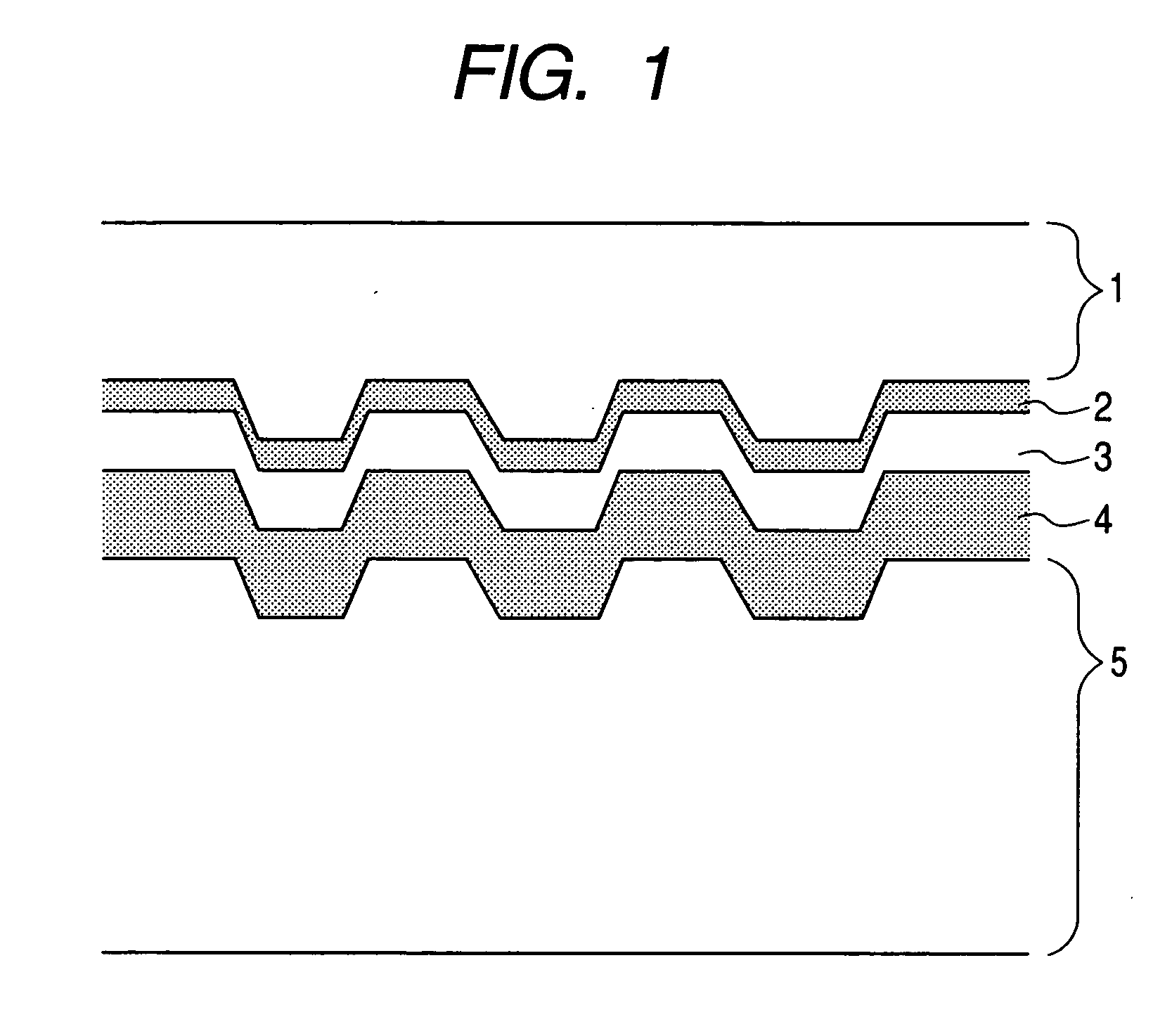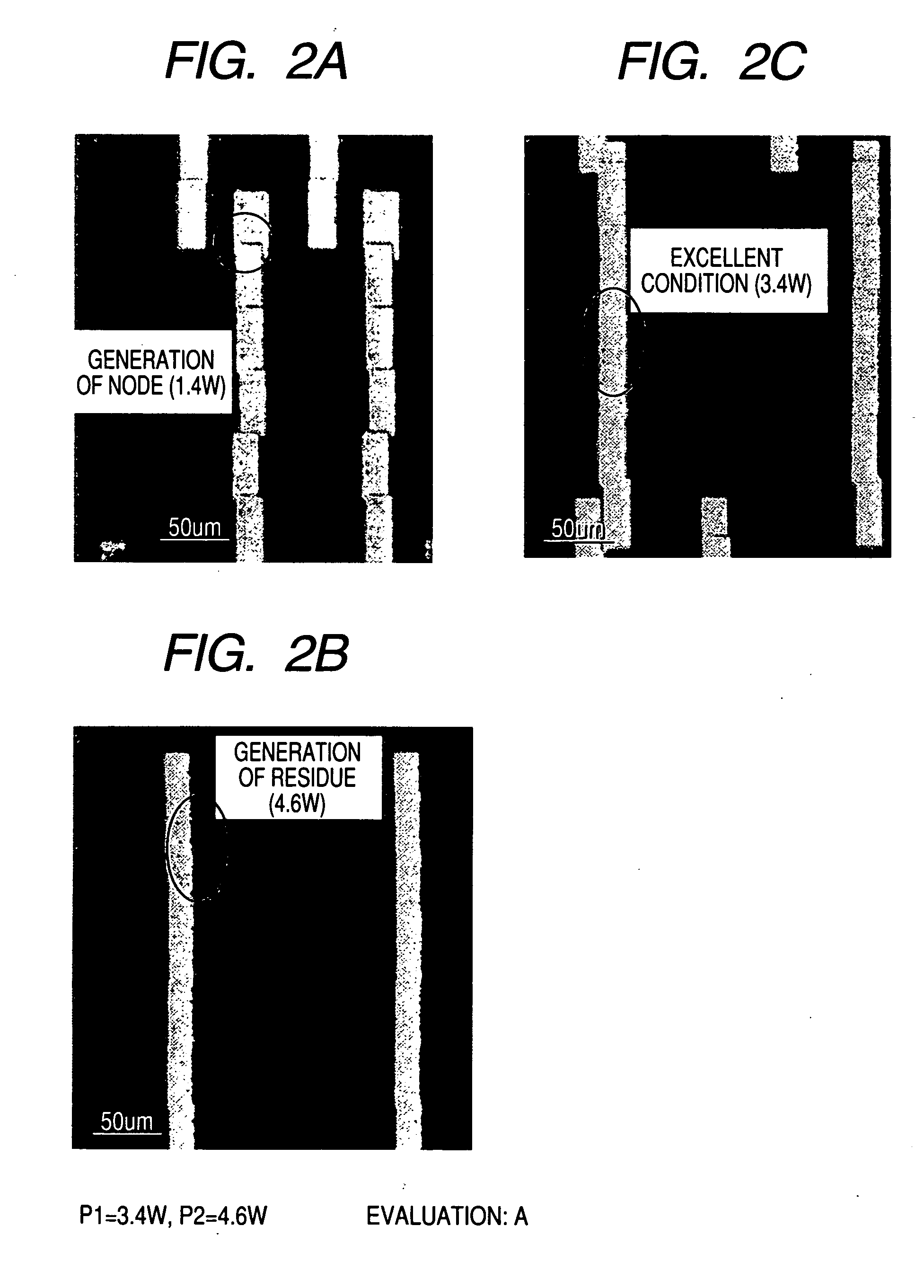Ag ALLOY REFLECTIVE FILM FOR OPTICAL INFORMATION RECORDING MEDIUM, OPTICAL INFORMATION RECORDING MEDIUM AND Ag ALLOY SPUTTERING TARGET FOR FORMING Ag ALLOY REFLECTIVE FILM FOR OPTICAL INFORMATION RECORDING MEDIUM
a technology of optical information and reflective film, which is applied in the field of optical information recording medium and ag alloy sputtering target for forming ag alloy reflective film for optical information recording medium, can solve the problems of difficult to provide an id number for individual disks, thermal damage of polycarbonate substrate that is a base and an adhesive, and reduce the reflectance. , to achieve the effect of convenient application
- Summary
- Abstract
- Description
- Claims
- Application Information
AI Technical Summary
Benefits of technology
Problems solved by technology
Method used
Image
Examples
example 1
[0060] In example 1, Ag—Nd—(Ti, Ta, W, Mo, V, Zr, Nb or Cr) thin films were prepared as Ag alloy thin film and evaluated in terms of the reflectance, durability and mark shape. Results are shown in Table 1.
[0061] It is found that in Ag—Nd—(Ti, Ta or W) thin films, as the amount of Ti, Ta or W increases, a power (P1) where the node disappears becomes lower and thereby a recording margin is expanded. Furthermore, a power (P2) where a size of the residue exceeds the upper limit size does hardly depend on the amount of Ti, Ta or W added, and, when a definite amount of the elements is contained, the mark shape can be improved. On the other hand, the reflectance becomes lower in all additive elements as an addition amount thereof is increased. Accordingly, it is found that the amount of an additive element is desirably suppressed in order to maintain the reflectance.
[0062] Test results of Ag alloy thin films shown in Table 1 will be detailed below. Ag alloy thin films of Nos. 1A through...
example 2
[0066] In example 2, Ag—(Nd, Gd, Y or Sm)—(Ti or Ta) thin films were prepared and evaluated of the reflectance, durability and mark shape. Results are shown in Table 2.
[0067] According to the Ag—(Nd, Gd, Y or Sm)—(Ti or Ta) thin films, it is found that as an amount of Nd increases, a power (P2) where a size of the residue exceeds the upper limit dramatically increases to improve the recording margin. This is considered to be corresponding that an addition of Nd or Gd inhibits the agglutination from occurring. On the other hand, as for the durability, it is found that when an amount of Nd exceeds 3.0 atomic percent the durability is remarkably deteriorated. Accordingly, an amount of Nd is necessarily limited to 3.0 atomic percent or less.
[0068] Test results of Ag alloy thin films shown in Table 2 will be detailed below. Ag alloy thin films of Nos. 1B through 6B are Ag—Nd—Ti thin films. Among these, with regard to an Ag—Nd—Ti thin film of No. 1B, since an amount of Nd is 0.1 atomic ...
example 3
[0070] In example 3, Ag—Nd—(Ti, Ta or W)—(Sn or In) thin films were prepared and evaluated of the reflectance, durability and mark shape. Results are shown in Table 3.
[0071] According to the Ag—Nd—(Ti, Ta or W)—(Sn or In) thin films, it is found that when an amount of Sn or In is increased, a power (P1) where a node disappears can be reduced and thereby a margin of the recording power can be effectively expanded. On the other hand, as an addition amount of Sn or In increases, a power (p2) where a size of the residue exceeds an upper limit size decreases. This is considered to be corresponding that since an Ag—Sn alloy is a eutectic alloy, a melting temperature is lowered to lower the viscosity and thereby agglutination tends to occur when the eutectic alloy is added. When Sn or In is added by 7.0 atomic percent, a power (P1) where the node disappears is such small as less than 1.0 W. It is found out that an addition amount of Sn or In is desirably 5.0 atomic percent or less and mor...
PUM
| Property | Measurement | Unit |
|---|---|---|
| thickness | aaaaa | aaaaa |
| wavelength | aaaaa | aaaaa |
| wavelength | aaaaa | aaaaa |
Abstract
Description
Claims
Application Information
 Login to View More
Login to View More - R&D
- Intellectual Property
- Life Sciences
- Materials
- Tech Scout
- Unparalleled Data Quality
- Higher Quality Content
- 60% Fewer Hallucinations
Browse by: Latest US Patents, China's latest patents, Technical Efficacy Thesaurus, Application Domain, Technology Topic, Popular Technical Reports.
© 2025 PatSnap. All rights reserved.Legal|Privacy policy|Modern Slavery Act Transparency Statement|Sitemap|About US| Contact US: help@patsnap.com


